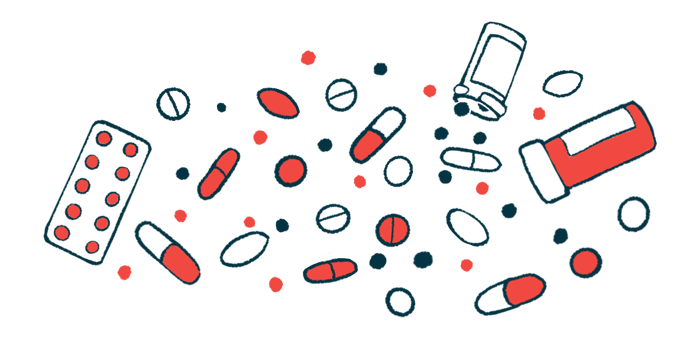Fewer GI Side Effects Seen in Study of Oral LYT-100 vs Esbriet

About half of the healthy older adults given PureTech’s anti-fibrotic therapy LYT-100 (deupirfenidone) were less likely to report gastrointestinal (GI) side effects compared with those given Esbriet (pirfenidone), according to a recent crossover study.
Based on these findings, data to date from LYT-100’s clinical program and regulatory feedback, the company plans to launch a dose-ranging study evaluating six months of LYT-100 treatment in people with idiopathic pulmonary fibrosis (IPF) by June.
LYT-100 is a modified version of Esbriet, an approved IPF treatment known to slow lung function decline but with GI-related side effects that limit its use. LYT-100 is designed to retain Esbriet’s anti-fibrotic and anti-inflammatory efficacy but with a better safety profile, PureTech reports.
“In the recently completed healthy older adult study, LYT-100 administration resulted in a clinically meaningful 50% reduction in the number of healthy older adults experiencing GI-related adverse events, compared to [Esbriet],” Julie Krop, MD, chief medical officer at PureTech, said in a press release.
“This underscores the potential of LYT-100 to address a significant unmet need for patients with IPF by offering a more tolerable treatment option that may allow patients to continue on therapy, which is critical to address this serious condition,” Krop said.
Positive results from the dose-ranging trial and an additional Phase 3 study could support a request for LYT-100’s approval via a 505(b)(2) pathway — a streamlined review process for potential new medicines that shortens development timelines by not requiring the full range of studies normally given investigative treatments.
“The ability to pursue a 505(b)(2) development path for LYT-100 based on the validated biology and known clinical benefits of [Esbriet] significantly de-risks our path to approval and has the potential to make this important therapy available to patients faster,” Krop added.
The crossover study evaluated the tolerability of 550 mg of LYT-100 versus 801 mg of Esbriet given three times a day to 49 healthy adults ages 60 to 79, consistent with the ages of IPF patients. Of note, studies have demonstrated that 550 mg of LYT-100 resulted in similar body-wide exposure levels to 801 mg of Esbriet.
Trial data showed that 38% fewer participants given LYT-100 reported any side effect compared with those who received Esbriet (30.4% vs. 48.9%), the company stated. Notably, about 50% fewer LYT-100-exposed individuals reported GI-related side effects compared with Esbriet exposure (17.4% vs. 34.0%).
Nausea, Esbriet’s most common side effect, was reported in 29.8% of the adults on Esbriet and 15.2% of those given LYT-100.
No serious adverse events were reported, and one person in each study group left due to therapy-related side effects.
“Treatments that are both more effective and have fewer side effects are urgently needed in the fight against IPF,” said Toby Maher, MD, PhD, a pulmonologist and professor of medicine at the University of Southern California. “LYT-100 builds on a wealth of existing clinical and biological knowledge and incorporates a novel modification that has now clearly been shown to improve tolerability and therefore treatment compliance — both of which are critical to improving outcomes for individuals with this chronic, progressive and inevitably fatal disease.”
This year’s planned dose-ranging study is expected to enroll up to 250 IPF patients not currently on treatment. LYT-100’s efficacy and tolerability — at different doses taken three times daily with meals — will be evaluated relative to placebo and compared to the effectiveness and tolerability of Esbriet.
Its main goal is a lower maximal therapy concentration (Cmax) — known to correlate with Esbriet’s GI-related side effects — but a similar or higher overall exposure as Esbriet. If results are positive, a Phase 3 study of LYT-100 will follow.
In support of the program, an earlier Phase 1 study (NCT04243837) of LYT-100 administered at doses ranging from 100 to 1,000 mg to healthy volunteers indicated the therapy was well-tolerated at all tested doses and did not reach the maximum tolerated dose — the highest dosage that can be administered without unacceptable side effects.
To oversee LYT-100’s development, the company announced that Paul Ford, MD, PhD, a clinical pulmonologist with expertise in IPF and other respiratory conditions, has joined PureTech as senior vice president of clinical development.
“I am thrilled to be joining PureTech as we move LYT-100 into late-stage clinical development for the treatment of IPF,” Ford said. “The data generated to date suggest LYT-100 may offer an important new treatment option for patients who are not currently on therapy or struggle to tolerate existing treatment options.”
LYT-100 is also being tested in an ongoing Phase 2a proof-of-concept trial (NCT04243837) involving people with a type of swelling related to breast cancer (lymphedema), and another Phase 2 study in individuals with long-term respiratory complications from COVID-19 (NCT04652518). Data from these trials are expected this year.








